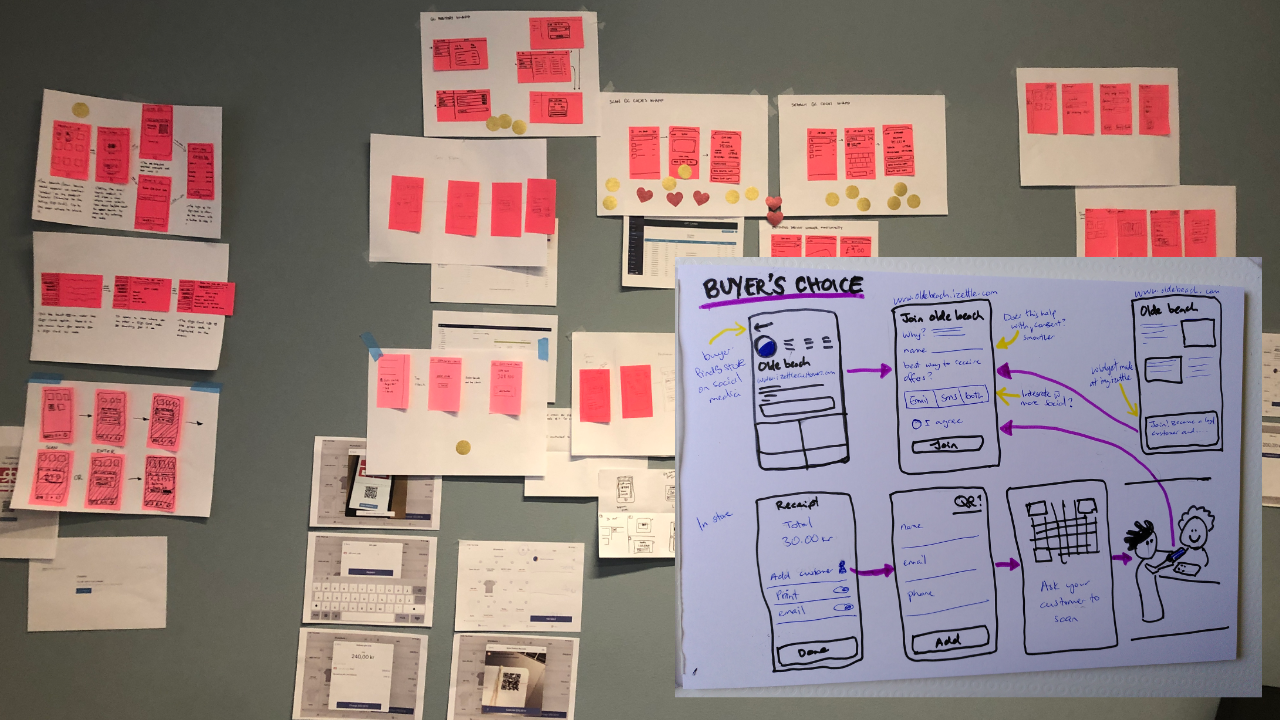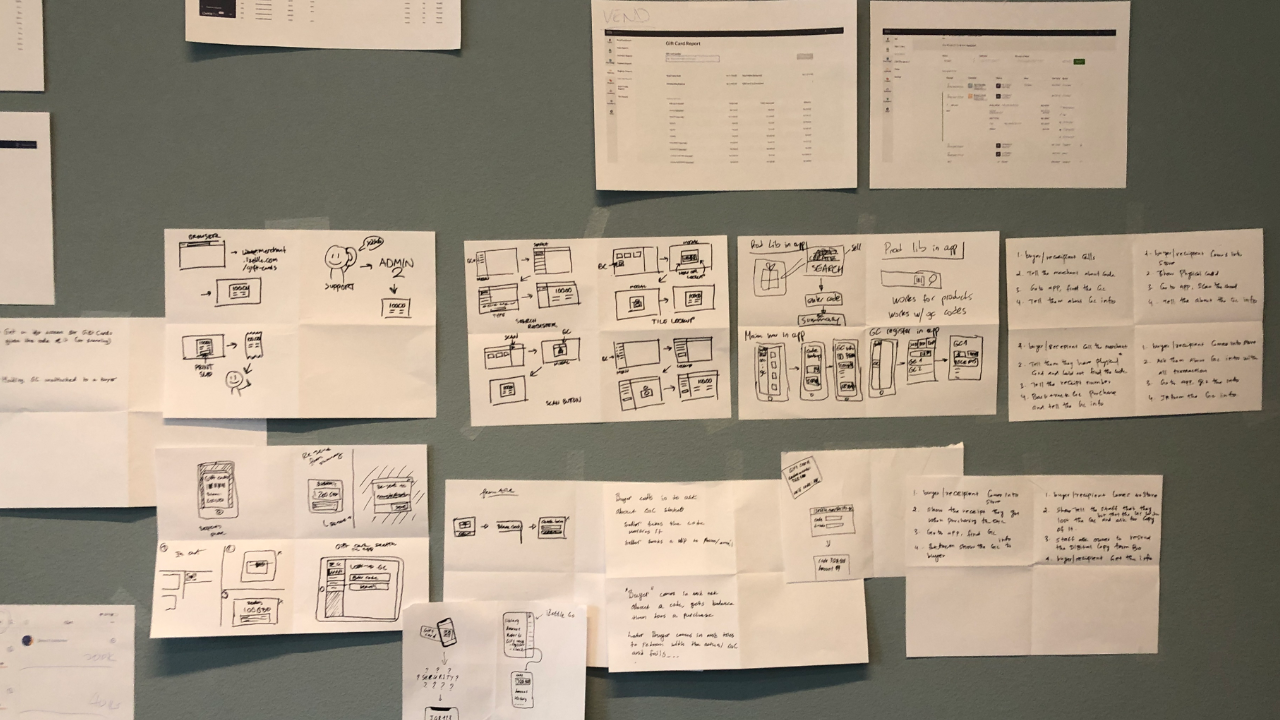

Case study: Sell and redeem Gift cards
My role—At Zettle by Paypal, I was a Design Area Lead within the Point of Sale (POS) department and managed designers within five cross-functional teams. In this project: Lead designer
Overview — Due to high demand from thousands of retailers, we launched gift card sales and redemption for small to mid-sized business owners. Gift cards boost revenue, enhance loyalty, reduce attrition, and attract new customers. Research shows 65% of shoppers spend 38% more than the card’s value.
Responsibilities— Led strategy for project, discovery with current retailers, structured & ran user interviews, concept development of product and payment structure, User flows, wireframes, UI design (with product designer), facilitated design sprints.
Collaborators—Cross-functional team of backend, frontend, ios, android devs; product manager, product designer, agile coach. Other departments working with tax and payment methods.


Gift card as a payment method in the mobile sales app







